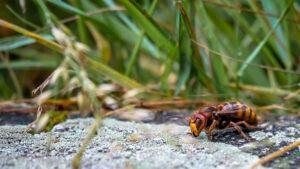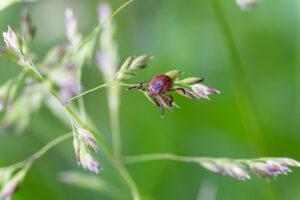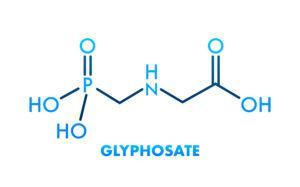
Harmful effects of pesticides used on potatoes, onions and apples
Research at Stockholm University has revealed that the manufacturers of pesticides used in apple orchards have concealed research showing that they can harm people's brains.
The identification of emerging risks is an ongoing process. The external communication of emerging risks is a complex task, with the methods, timing and target audience being determined on a case-by-case basis. Depending on the nature of the issue, the target group may be the authority (in particular the National Food Chain Safety Office – NÉBIH), senior managers, the professional community, food businesses or the wider community, consumers interested in the issue, etc. Not only emerging risks requiring action may be communicated, but some issues may also help to promote research or be important due to their educational character, and therefore may be communicated through communication channels such as the DFI's website.

Research at Stockholm University has revealed that the manufacturers of pesticides used in apple orchards have concealed research showing that they can harm people's brains.

In March 2023, EFSA's new evaluation of the nitrosamine content of foods was published, according to which the dietary intake of these substances generated during the preparation and processing of foods raises health concerns for all age groups.

The UK has halted imports of live cattle, sheep, and goats from France due to an outbreak of a potentially fatal disease for ruminants known as Epizootic haemorrhagic disease (EHD) (also known as Ibaraki disease in cattle).

Several news portals have shared the news that the Asian hornet ((Vespa velutina) has also appeared in Hungary in 2023, as reported by the OMME (National Hungarian Beekeping Association).

A newly discovered group of Jingmenviruses have been shown to infect a wide range of hosts and are associated with febrile illness in humans.

Glyphosate has been the most widely used herbicide throughout history, both in America and the rest of the world. One of the most well-known products containing glyphosate is the Monsanto company Roundup, which has been used for more than 40 years. Below is a summary of the latest research results on the pesticide and news on its reevaluation.

A recent study by Trinity College and DCU reveals that pesticides are present in flowers that were not treated with chemicals, posing a threat to pollinators. The research, which is the first multi-field survey of pollen and nectar from crops and wild plants in Ireland, evaluated the residues of fungicides and herbicides in nectar and pollen.

Some wine-growing regions of northern Italy requested an exemption from the chlorpyrifos ban, as they claim that it is the only solution capable of fighting the leafhopper Scaphoideus titanus, which is the vector of the vine disease Flavescence dorée.

Veterinarians have started administering molnupiravir, an anti-Covid drug known as Lagevrio, to cats in Cyprus to address an outbreak of feline coronavirus (FCoV-23) that began in January 2023.
During the Covid U.S. researchers started to collect information about signs that COVID makes the spread of deadly fungi possible.
The reduction of food waste and the transition to circular food production are receiving increasing attention worldwide. One of the goals is to create a more sustainable food system, with a focus on minimising food waste and recycling. Initiatives and innovations are helping to make full use of agricultural products, recycle food by-products, and develop conscious consumer habits to reduce losses in the food chain and promote planet-friendly practices.
French researchers investigated the physicochemical properties of the food additive tricalcium phosphate (TCP) (E341(iii)) in an article published in June 2023. The additive is used in powder-based foods, e.g. in baby formula, mainly because of its anti-caking properties and as a source of nutrients.
The application of nanoparticles can be linked to the food chain in many areas. In Ireland, for example, the first known nanoscale flocculant is Z15, which contains iron oxide (Fe3O4) with a size range of 1-60 nm.
A BioFoodTech start-up, has developed a novel bioactive ingredient based on the natural mechanisms found in human breastmilk. The company has isolated exosomes, which are small particles, microRNAs, present in maternal milk.

Since the beginning of 2020, there have been severe outbreaks of highly pathogenic avian influenza viruses (HPAI H5N1) belonging to the clade 2.3.4.4b. These outbreaks have been the most serious and significant ever recorded among avian populations in Europe, spanning the epidemic years 2020/21, 2021/22, and continued into the ongoing epidemic in 2022/23 [1].
Listeria monocytogenes, is a foodborne, pathogenic bacterium, is known worldwide for its resistance to various process (temperature, pH, preservation techniques). However, a recent study in South Africa shows that two non-pathogenic species – L. innocua and L. welshimeri, develop dangerous sequences that are potentially harmful to humans.
In a study published in January 2021, the Agricultural Research Service (ARS) of the US Department of Agriculture (USDA) identified 33 new strains of mycotoxin-producing fungi within the genus Fusarium.
Octarine Bio, a Danish bio-based ingredients manufacturer, has joined forces with Ginkgo Bioworks, a US cell programming company, to engineer a strain capable of producing violacein and its derivatives, a purple pigment, through microbial fermentation.
At the 29th meeting of EFSA's Scientific Network on Emerging Risks, the following potentially emerging risk was brought to the attention of the DFI. Atherigona orientalis a pantropical and unregulated species, has recently been reported in mainland Spain, France, and Greece. The species has been intercepted multiple times during import controls in France on shipment originating from tropical countries.

The latest study, funded by the Center for Produce Safety (CPS), has disproved the previous assumption that raw materials are the main source of Listeria monocytogenes contamination in processing plants.